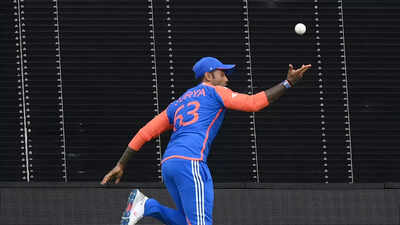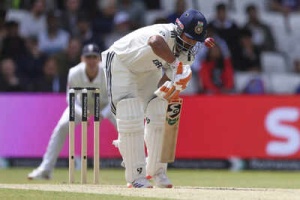The International Cricket Council (ICC) has announced significant alterations to the playing conditions across Test, ODI, and T20I formats. These changes address key aspects such as over rates, ball usage, boundary catches, concussion protocols, and wide deliveries, aiming to enhance the game's flow and fairness.

To combat slow over rates in Test cricket, the ICC is implementing a stop clock rule, previously tested in white-ball formats. A new over must commence within 60 seconds of the previous one's completion. Teams will receive two warnings per innings, with subsequent breaches incurring a five-run penalty. These warnings reset every 80 overs, coinciding with new ball availability.
In ODIs, the rule regarding ball usage has been modified. The use of two balls will now be restricted to the first 34 overs. For the remaining 16 overs, the fielding side will have the option to select one of the two balls to continue play, allowing for more effective management of ball wear and tear.
The ICC has clarified the rule concerning boundary catches. Fielders making airborne contact with the ball beyond the boundary must land entirely within the field of play to complete a legal catch. If a fielder steps outside the boundary and jumps again, they are permitted only one additional touch before landing inside the boundary.
To prioritize player safety, teams are now required to pre-nominate concussion substitutes. Any player diagnosed with a concussion must undergo a mandatory seven-day rest period before being eligible to return to competitive play.
A trial of a new wide ball rule is set to commence in white-ball cricket. The batter's position at the time of delivery will be the determining factor for judging wides, rather than their position after moving. Deliveries passing between the leg stump and the extended protected area marker at the popping crease will no longer be called wide. However, deliveries passing behind the batter's legs may still be deemed wide. The protected area marker will be extended to the popping crease to assist umpires.
The Decision Review System (DRS) will now utilize the actual physical outline of the stumps and bails to define the wicket zone, aiming to improve the accuracy of LBW decisions.
The penalty for a deliberate short run has been increased. In addition to the existing five-run penalty, the fielding team will now have the right to choose which batter takes strike for the next delivery.
In domestic first-class cricket, a player who sustains a serious on-field injury at any point after the match has started (including during warm-ups) can be replaced by a like-for-like player for the remainder of the game.
The new Test playing conditions were effective from June 17, starting with the Sri Lanka vs Bangladesh Test. The revised ODI and T20I rules will be implemented from the same series, commencing with the first ODI on July 2 and the T20Is from July 10. All international matches played after these dates will be governed by the updated regulations.
Newer articles
Older articles
 Hetmyer's Heroics: Orcas Stun MI New York with Last-Ball Six in Record-Breaking MLC Chase
Hetmyer's Heroics: Orcas Stun MI New York with Last-Ball Six in Record-Breaking MLC Chase
 Android Users Face Critical Security Risks: Update Your Devices Now, Warns Government Agency
Android Users Face Critical Security Risks: Update Your Devices Now, Warns Government Agency
 Greg Chappell Hails Rishabh Pant's "Revolutionary" Batting, Likens Him to Gilchrist
Greg Chappell Hails Rishabh Pant's "Revolutionary" Batting, Likens Him to Gilchrist
 Dog-Sized Dinosaur Fossil Unearths New Insights into Prehistoric Life Alongside Giants
Dog-Sized Dinosaur Fossil Unearths New Insights into Prehistoric Life Alongside Giants
 West Indies Captain Chase Slams Umpiring After Test Loss, Demands Accountability
West Indies Captain Chase Slams Umpiring After Test Loss, Demands Accountability
 IRCTC's AI Chatbot, AskDisha 2.0, Streamlines Train Ticket Booking, Refunds & Information
IRCTC's AI Chatbot, AskDisha 2.0, Streamlines Train Ticket Booking, Refunds & Information
 Freestyle Chess India Event Scrapped Due to Sponsorship Issues; Carlsen Absence Confirmed
Freestyle Chess India Event Scrapped Due to Sponsorship Issues; Carlsen Absence Confirmed
 Moto G54 Gets Significant Price Drop in India: Check Out the New Affordable Price Tag
Moto G54 Gets Significant Price Drop in India: Check Out the New Affordable Price Tag
 New Zealand Cricket Announces Packed 2025-26 Home Schedule Featuring Australia, England, West Indies & South Africa
New Zealand Cricket Announces Packed 2025-26 Home Schedule Featuring Australia, England, West Indies & South Africa
 Converting JPG to PDF: A Comprehensive Guide for Preserving Image Quality and Ensuring Accessibility
Converting JPG to PDF: A Comprehensive Guide for Preserving Image Quality and Ensuring Accessibility